Smart racquet on hand to transform tennis coaching
- Published
This computerised racquet promises to raise your game, as LJ Rich reports
Imagine having a virtual "tennis coach" that knows exactly where your racquet hits the ball.
It counts forehands and backhands, serves and smashes. And when play is finished, the coach compares your stats with existing tennis data that it has easily to hand.
But this coach is not kitted out with tracksuit and trainers. Rather it relies on sensors and chips.
It sounds futuristic but technology like this is already available, embedded in one of the newer tennis racquets on the market - the Babolat Play Pure Drive.
Packed with sensors detecting string vibration and movement, the device works with a smartphone (over Bluetooth) or plugs into a computer (via USB). The company says it is the first connected racquet in the world.
'Accurate data'
"We integrated sensors inside the handle of the racquet, but it does not change the specification. And these sensors will analyse your tennis game, so your swing - your motion - and all this information will be collected by the racquet," Gael Moureaux, tennis racquets products manager at Babolat's HQ in the French city of Lyon, tells the BBC.
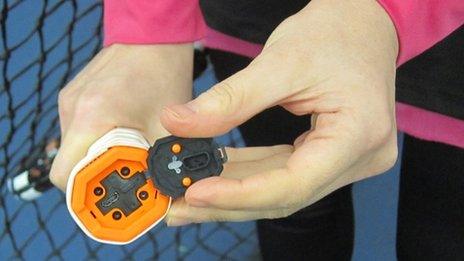
The racquet device works with a smartphone or plugs into a computer
He adds: "During the development process of the racquet, we did a lot of lab tests with a lot of players around the world to make sure the data is accurate and to have the right data for the player."
Babolat's take on personal sporting analytics has the potential to greatly impact professional tennis.
That is because it is the first company to put a connected racquet through the International Tennis Federation (ITF) approval process.
Information collection
The ITF, aware of the growing influx of hi-tech equipment into the sport, has set up a programme called Player Analysis Technology (PAT) to regulate such "virtual coaches" as the Babolat racquet.
It defines PAT items as being "any equipment that collects, stores, transmits, analyses or communicates information on player performance, and may be a standalone device or incorporated within existing equipment".
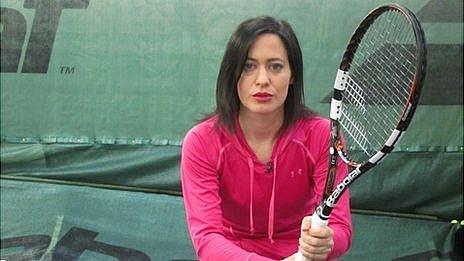
If approved, the hi-tech racquet could soon be seen at Grand Slam tournaments
Successful approval from the ITF would mean that top players could use the French racquet in Grand Slam tournaments such as the French Open this spring at Roland Garos in Paris.
But why is an approval process needed at all?
Banned items
A quick delve into tennis history shows technology consistently at the heart of the game, and innovation has generally moved at a quicker pace than the game's regulators can keep up with.
Over the past 50 years, wooden racquets were replaced by metal, then carbon fibre mixed with other materials, and now computer-connected models.
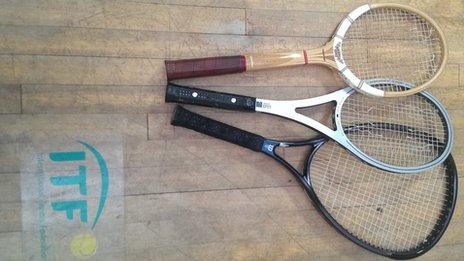
Three generations of racquets - wood, metal and carbon fibre
This time round the governing body wants to be calling the shots on where and how innovation can be used, as in the past it has found itself having to ban some products already on the market and in use, such as the so-called "spaghetti-strung" racquets (with double stringing).
Since the profound impact of the metal racquet, testing has been carried out with the idea of ensuring every player has a fair chance of winning - with approved equipment.
Bigger frames
Machines at the ITF's high-tech lab at Roehampton, south-west London, strenuously test racquets and balls for approval on the court.
"One of the biggest revolutions in tennis was when a gentleman called Howard Head discovered you could make racquets with bigger faces and larger frames using a material other than wood," says Stuart Miller, of the ITF.
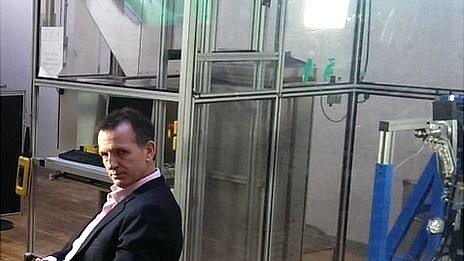
Stuart Miller, of the ITF: "There's no going back now"
Players using metal racquets would have the advantage over equally skilled opponents using wooden frames.
This was because a metal racquet enabled the player to have a greater hitting area. They would be more likely to hit the ball and less likely to hit it on the frame.
"Eventually racquets became lighter and could be swung faster, generating the kind of serve speeds and spins that we're seeing in today's game," adds Mr Miller.
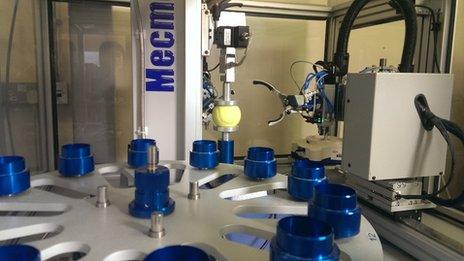
Tennis balls being tested at the ITF laboratory
"That was a fundamental shift, and no matter how much some people would like to think that the wooden racquet has a place in tennis today, I'm afraid there's no going back now."
It is this delicate balance between tradition and technology that remains particularly relevant to the tennis world.
Coaching ban extended
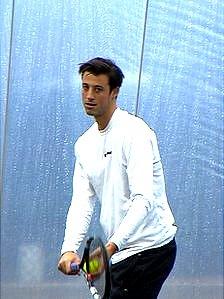
Nik Snapes says ability makes a player, not technology
In conjunction with its PAT approval programme, the ITF has also brought in a new rule - Rule 31 - to reflect the growing use of connected equipment, and its possible role in tournament play.
The ITF's existing rules currently ban touchline coaching, and to now prevent hi-tech "coaching" - in this case players potentially studying their strokeplay data between games - the new regulation has appeared.
It states that a "player may not have access to data collected by Player Analysis Technology during play, except when play is suspended and coaching is permitted".
But despite the innovations coming thick and fast, one trainer does not think he is in danger of being upstaged by a smart racquet.
"I think that it's great for feedback but you still need someone to analyse it. At the end of the day it's the practice and the ability of someone that makes the player, not necessarily the equipment in their hand," says Nik Snapes, racquets manager and tennis pro at Roehampton Club.
With the player analytics revolution come the consequences that might arise from using this technology.
Approved devices need to be secure and protected against unauthorised access, to prevent "sporting espionage'" whereby data could be stolen. Knowing when an opponent's right hand gets tired during the second set would be a huge advantage.

Racquets such as Babolat's allow ordinary players to check performance against top pros
Player analytics, like the metal racquet, is here to stay.
But though it will have a huge impact on the evolution of tennis, the game should remain as popular as ever - provided players have the opportunity to compete on skill and strategy alone.